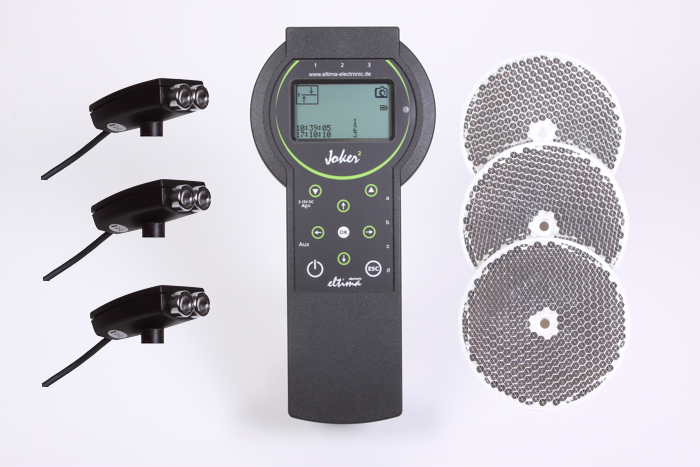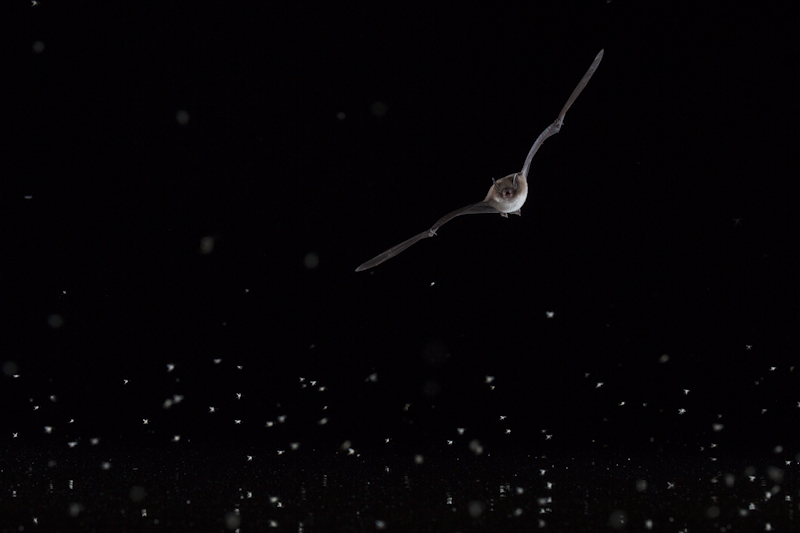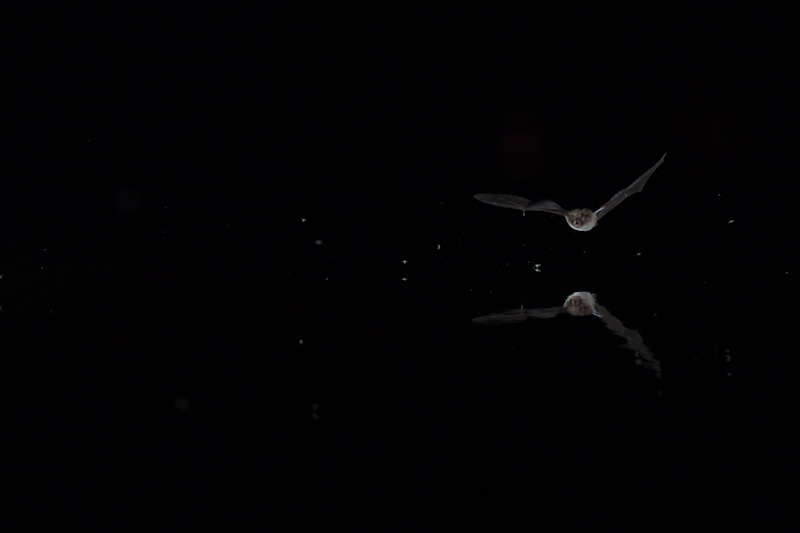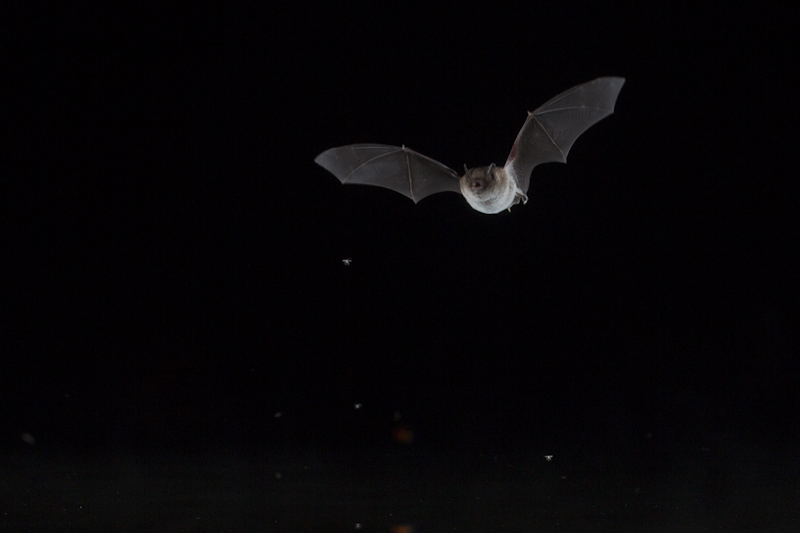For the past ten years, I have been constructing my own IR-barriers for wildlife photography and have working with them on kingfishers and bats with great joy. However, a few weeks ago, I changed strategy and bought myself my first ‘real’ infrared-barrier when I came across the small german family company Eltima Electronic. Their IR-barrier ‘Joker2‘ was just too tempting to resist. So bye bye, old soldering iron, crazy diodes, resistors, capacitors and all you other electronic components that have given me headaches for a while and only will turn your hair grey.

Eltima Electronic Joker2 with up to three IR-beams and their reflectors.
The new IR-barrier is an amazing tool and combines up to three different IR-beams in one unit and allows time delays, measures camera shutter lags, determines directions and speeds of passing objects and can separately and differently control up to four devices like cameras and flashes. It can do much more that this, is easy to operate and by far the best IR-barrier that I have seen so far.
Enough said about the tool, because as most tools, it would be worthless, unless you know how to use it. An expensive guitar will only be an expensive piece of wood with strings unless you know how to play it. And the best golf clubs will only be a funny looking piece of metal unless you know hot to hit the ball.
Having just returned from photographing bears and wolfs in northern Finland, I couldn’t wait to test the IR-barrier on Daubenton’s bats (vattenfladdermus/Wasserfledermaus) at the river Höje Å in Lund, just three minutes from my home. In some parts of the river, bats are regularly flying low above the water surface, hunting insects. During five nights, I have been working hard and managed to get some very satisfying results, making it worthwhile the lack of sleep.
Like most wildlife photography projects, it takes a while to find out the best places, how the animals move and where to place the camera. It is an exciting challenge to observe these small, flying mammals at close range and watch them skillfully catching insects. Once I had found a good spot, I managed to get about ten good photographs each night. Below, there are some of them. The white ‘spots’ are flying insects, chironomids, above the water surface. All photographs are taken with Canon 5D Mk III, 100-400 IS USM at 150mm, tripod, four flashes Canon Speedlite 540EZ, Eltima Joker2 IR-barrier. When photographing bats it is wise to chose a wider angle because the exaxt flight route is very hard to predict. The risk of cutting off wings is therefore rather high and the success rate increases if you choose a smaller lens with a wider angle and crop the image afterwords. All images are therefore cropped from the original 22 Mpx to about 12 Mpx.
I am offering bat high-speed photography workshops 24-26 August 2012. Feel free to join me during two nights of exciting bat photography.

Daubenton's Bat (Myotis daubentonii), Lund, Sweden July 2012. Copyright Felix Heintzenberg

Daubenton's Bat (Myotis daubentonii), Lund, Sweden July 2012. Copyright Felix Heintzenberg

Daubenton's Bat (Myotis daubentonii), Lund, Sweden July 2012. Copyright Felix Heintzenberg
